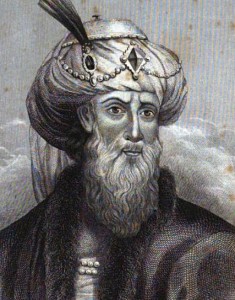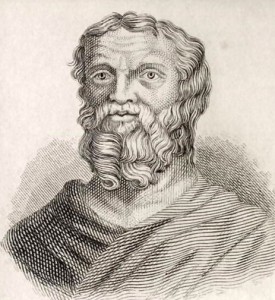We've always had a lot of myths written about birds going back to ancient times. There are plenty of stories about dragons, dinosaurs of ancient times, too. There are no mythical stories of dinosaurs turning into birds
10 Truly Crazy Birds From World Mythology - Listverse
"After Alexander the Great invaded India he brought back reports of seeing a great hissing dragon living in a cave. Later Greek rulers supposedly brought dragons alive from Ethiopia. (Gould, Charles,
Mythical Monsters, W.H. Allen & Co., London, 1886, pp. 382-383.) Microsoft Encarta Encyclopedia (“Dinosaur” entry) explains that the historical references to dinosaur bones may extend as far back as the 5th century BC. In fact, some scholars think that the Greek historian Herodotus was referring to fossilized dinosaur skeletons and eggs when he described griffins guarding nests in central Asia. “Dragon bones” mentioned in a 3rd century AD text from China are thought to refer to bones of dinosaurs.

Titus Flavius Josephus

Herodotus – “Father of History”
Ancient explorers and historians, like Josephus, told of small flying reptiles in ancient Egypt and Arabia and described their predators, the ibis, stopping their invasion into Egypt. (Epstein, Perle S.,
Monsters: Their Histories, Homes, and Habits, 1973, p.43.) A third century historian Gaius Solinus, discussed the Arabian flying serpents, and stated that “the poison is so quick that death follows before pain can be felt.” (Cobbin, Ingram,
Condensed Commentary and Family Exposition on the Whole Bible, 1837, p. 171.) The well-respected Greek researcher Herodotus wrote: “There is a place in Arabia, situated very near the city of Buto, to which I went, on hearing of some winged serpents; and when I arrived there, I saw bones and spines of serpents, in such quantities as it would be impossible to describe. The form of the serpent is like that of the water-snake; but he has wings without feathers, and as like as possible to the wings of a bat.” (Herodotus,
Historiae, tr. Henry Clay, 1850, pp. 75-76.) This is a remarkable description of a pterosaur! In his third volume Herodotus goes on to tell how these animals could sometimes be found in the Arabian spice groves. He describes their size, coloration, and reproduction. It seems that venomous flying serpents were infamous for living in frankincense trees. When workers wanted to gather the tree’s incense, they would employ putrid smoke to drive the flying reptiles away. (Note the illustration below to the the right.) Herodotus has been called “the Father of History” because he was the first historian we know who collected his materials systematically and then tested them for accuracy. John Goertzen noted the Egyptian representation of
tail vanes with flying reptiles and concluded that they must have observed pterosaurs or they would not have known to sketch this leaf-shaped tail. (Goertzen, J.C., “Shadows of Rhamphorhynchoid Pterosaurs in Ancient Egypt and Nubia,”
Cryptozoology, Vol 13, 1998.)"
Dragons in History | Genesis Park .
.
